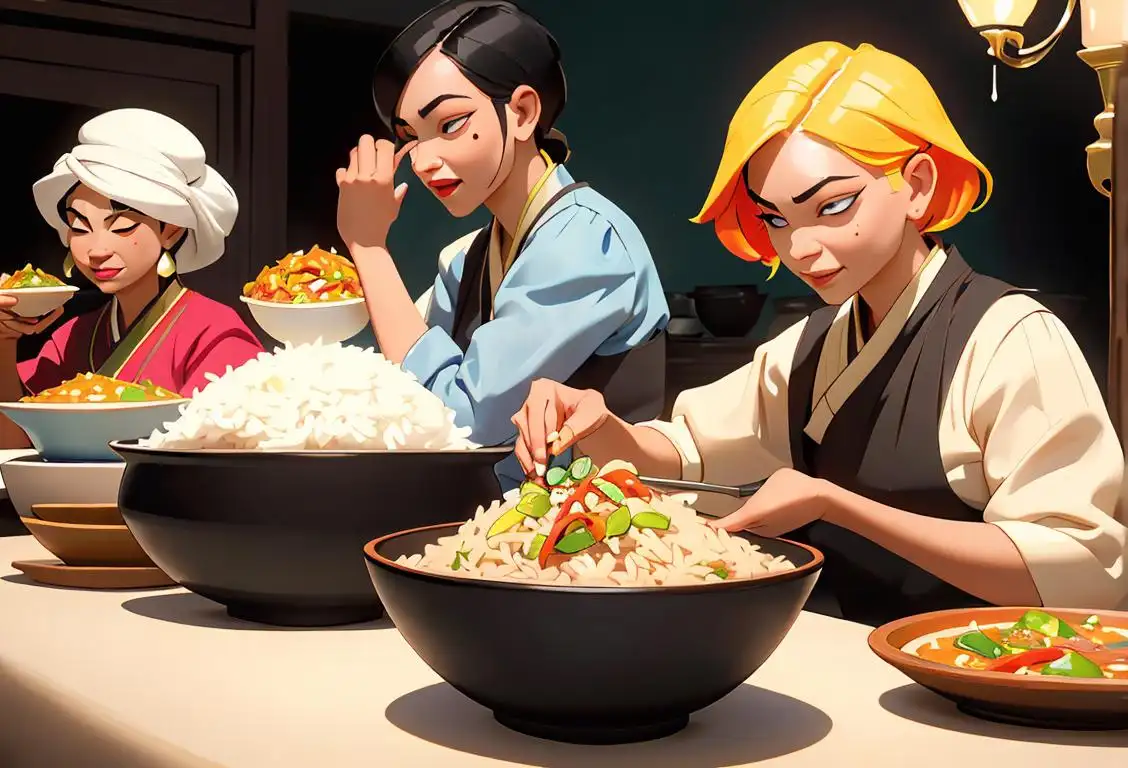National Rice Day

Welcome, grains admirers, rice enthusiasts, and people who love eating minute-long-boiled things. Let's jump into a bowlful of history (like a warm bowl of rice) and rewind to the time when 'National Rice Day' became a thing. A 'rice' thing, never a dull moment here!
When is Rice Day?
It's national rice day on the 29th June.
Mentioning The Mentionables
Based on our careful internet scraping skills crafted over several caffeine-fueled nights, we've detected 38 juicy mentions of National Rice Day online so far, with the most mentions cropping up on 29 June 2016. Now, whether that happens to coincide with a rice-cooking competition or a particularly undeniable craving for fried rice that day, is something we'll leave for your imagination.
It's a Rice World After All
Rice isn't just a food staple. To many, it is a way of life, a connection to culture, and a part of rich culinary tapestry that binds us all, one grain at a time. From the plate of steaming Basmati with a side of spicy curry in India, to the soul-soothing risotto of Italy, let's agree that rice makes the world (or at least, meals) a whole lot better.
A Grain of Tradition
Why the 29th of June, you may ask. Well, while we can't confirm a specific historical event tied to this date, we couldn't find any major 'rice-related tragedies' either, which is always a good sign. Perhaps it's simply the day when people decided to appreciate the tiny grain that occupies a big part of our heart (and plates!).
Let's Rice to the Occasion
Whether this day should be celebrated by setting a record for the most amount of rice cooked or by promoting sustainable farming traditions (or both, why not?), is totally up to you. So grab your favorite bowl, a supersized spoon, and happily slurp away to commemorate National Rice Day!
History behind the term 'Rice'
3000 BCE
Ancient Origins
Rice cultivation is said to have originated around 3000 BCE in the Yangtze River valley region of China. Archaeological findings show evidence of rice cultivation in this area, suggesting it was a staple food for the ancient Chinese civilization.
1000 BCE
Spread to Southeast Asia
By 1000 BCE, rice cultivation had spread beyond China to other parts of Southeast Asia, including regions now known as Myanmar, Thailand, and Cambodia. The crop became vital to the agricultural systems of these societies, contributing to their economic growth and cultural development.
200 BCE - 200 CE
Arrival in India
During the period between 200 BCE and 200 CE, rice cultivation reached the Indian subcontinent through the influence of trading routes. The introduction of rice played a significant role in shaping Indian cuisine and cultural practices.
8th Century
Arrival in the Middle East
During the 8th century, the Arab expansion led to the introduction of rice to the Middle East. The crop quickly gained popularity, and its consumption spread throughout the region. Rice became a staple grain for many Middle Eastern cuisines.
15th Century
Transatlantic Journey
The 15th century marked a significant milestone in the global spread of rice. European explorers, most notably Christopher Columbus, brought rice to the Americas during their transatlantic voyages. The crop became ingrained in the diets of many Native American tribes and significantly influenced the cuisines of the New World.
17th Century
Colonial Plantations
In the 17th century, European colonial powers established lucrative rice plantations in regions like Carolina, USA. The cultivation and trade of rice became central to the economies of these colonies, resulting in the forced labor of enslaved Africans. This dark period in the history of rice production highlights the exploitative nature of the industry at the time.
20th Century
Modern Rice Revolution
During the 20th century, advancements in agricultural technology and breeding led to what is known as the 'Green Revolution' in rice production. Scientists developed high-yielding varieties of rice that greatly increased crop productivity, helping to address food shortages in many parts of the world. This revolution transformed rice cultivation into a major global industry.
Did you know?
Did you know that there are more than 40,000 varieties of rice? That's a different variety for every day of the year for over 100 years!Tagged
awareness food fun culture cuisine traditionsFirst identified
5th June 2015Most mentioned on
29th June 2016Total mentions
38Other days
Rice Day
Eat What You Want Day
Braai Day
Hot Sauce Day
Be A Dick To Natives Day
Noodle Day
Ginger Day
Vegemite Day
Korean Bbq Day
Boba Day







